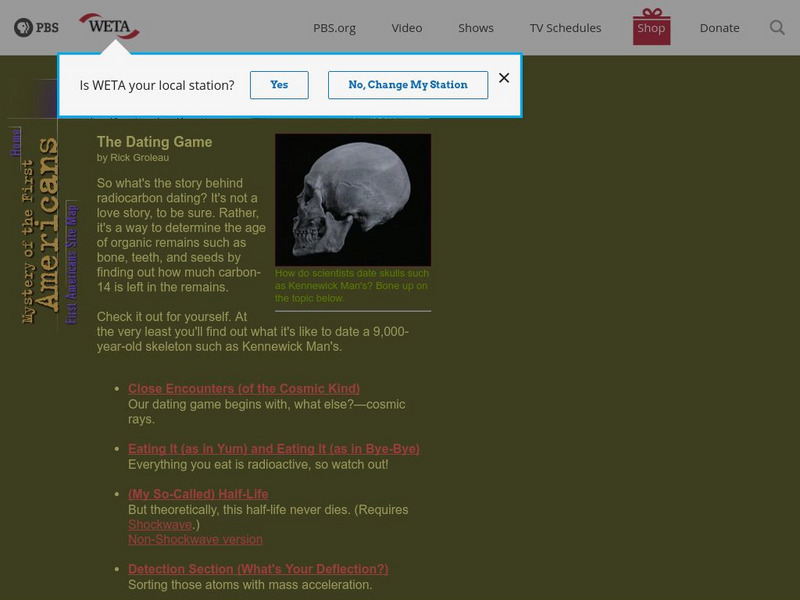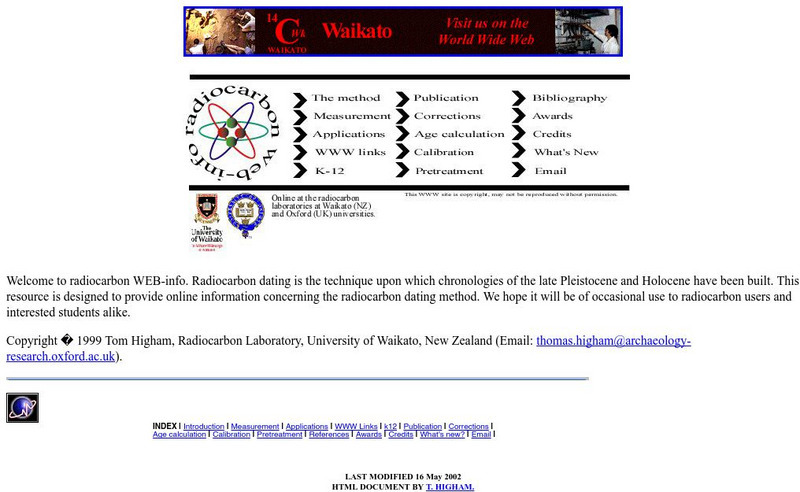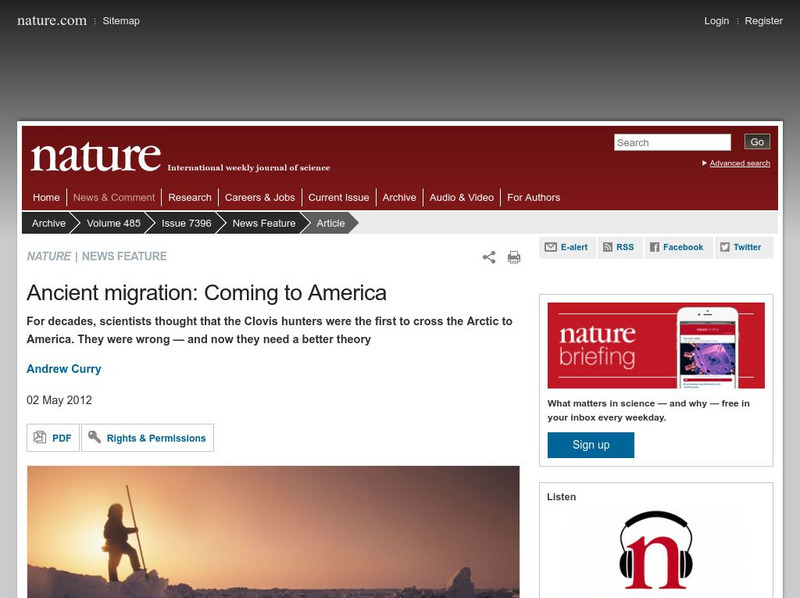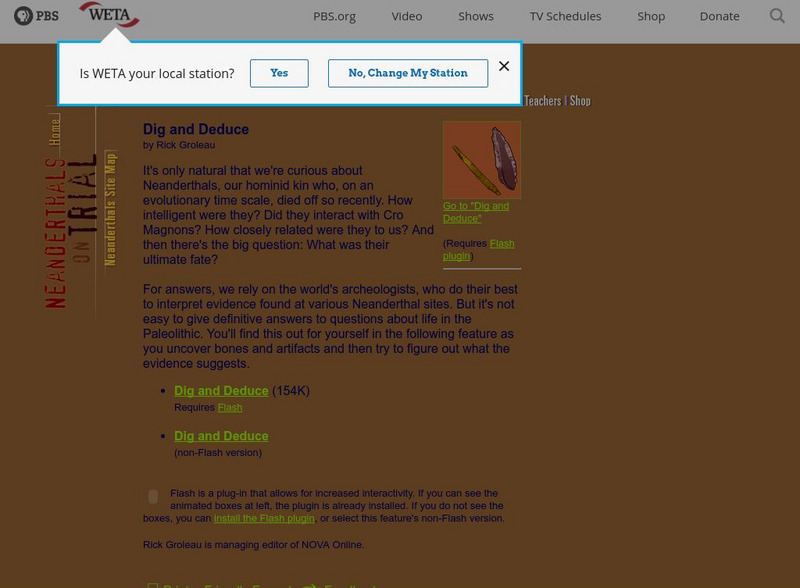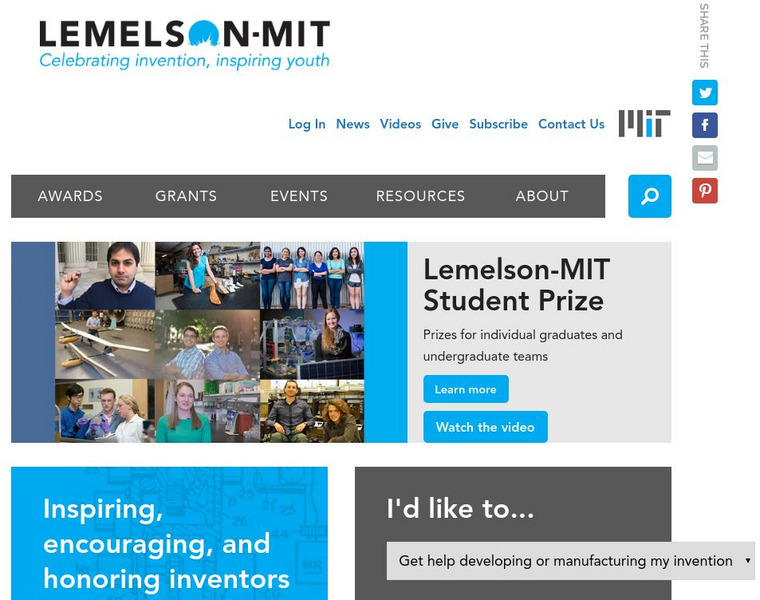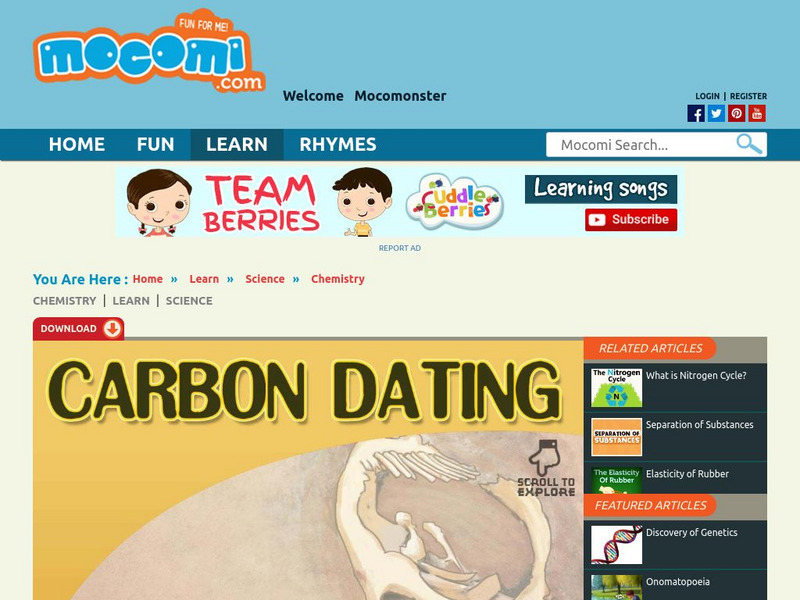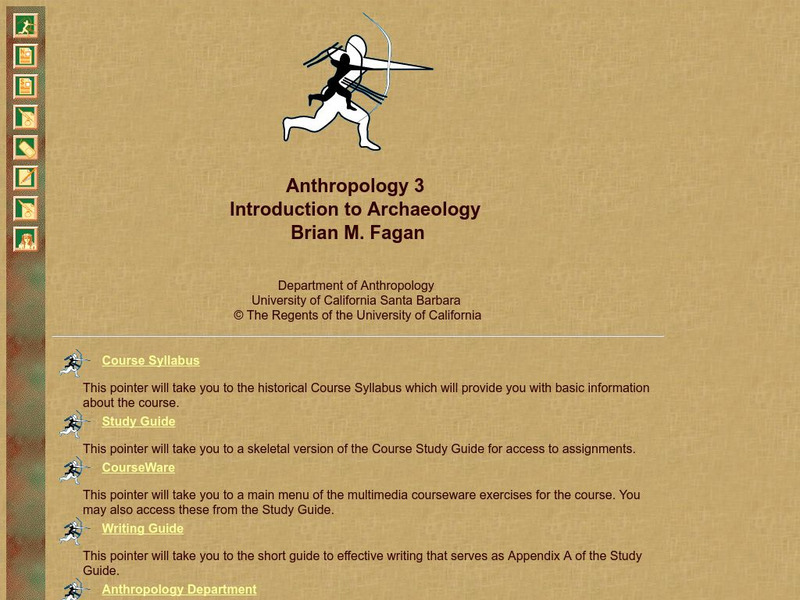Curated OER
Exponential Decay
Students study exponential decay and its application to radiocarbon dating. In this exponential decay lesson, students use candy to model the time it takes for something to decay. Students also graph the data they collect and describe...
Curated OER
Investigating the Mammoth Mystery
Fourth graders go on a virtual dig to find out where the mammoth bones found in a rural U.S. county came from. They determine whether the bones were created by humans or were they the actual remains of mammoths who walked the area during...
Curated OER
Relative Dating In Archeology
Students generate a time line, interpreting the ways in which past peoples may have used the artifacts at their disposal. Students also develop a poster showing a theoretical stratigraphic deposit, and then analyze the cultural materials...
PBS
Pbs Learning Media: The Dating Game: Radioactive Carbon
In this media-rich essay from the NOVA: "Mystery of the First Americans" Web site, learn about the atomic structure of radioactive carbon and how it can be used to determine the age of organic remains, such as bones and teeth.
PBS
The Dating Game: Radiocarbon Dating
Part of PBS-NOVA Online. An excellent explanation of how radiocarbon dating is done and why it works. Great material for earth science, history or biology classes.
Other
Geo Times: The Ice Free Corridor Revisited
A very comprehensive article about the ice-free corridor which was possibly the passageway for Paleoindians to enter North America. The discussion includes geology as well as anthropolpgy.
Other
Radiocarbon Web Info.
"Radiocarbon dating is the technique upon which chronologies of the late Pleistocene and Holocene have been built." Site gives updated information.
Other
Radiocarbon Web Info: What Is Radiocarbon Dating?
This article explains radiocarbon dating and its development.
Other
Cabrillo College: The Men From Spirit Cave and Wizard's Beach
Read about the discoveries of the Spirit Lake Man and Wizard's Beach Man.
Nobel Media AB
The Nobel Prize: The Nobel Prize in Chemistry 1960
At this site read about Willard Frank Libby (1908-1980 CE), the scientist and mathematician who discovered the carbon dating methods used by archaologists and geologists. This website includes the Nobel Prize "Presentation Speech," as...
California State University
California State University Virtual Courseware Project: Radiocarbon Dating
Use interactive graphs and other diagrams to answer questions about carbon dating.
Nature Research
Nature News and Comment: Ancient Migration: Coming to America
A May, 2012 news feature from Nature magazine looks again at early migration theories that brought man across the Arctic to America. Was Clovis man really the earliest?
Curated OER
National Park Service: Archeology Program: Kennewick Man
The National Park Service has documented the findings on the Kennewick Man in this lengthy and detailed website. Also included is a Cultural Affiliation Report and Report on the DNA Testing Results.
National Endowment for the Humanities
Neh: Edsit Ement: Kennewick Man: Science and Sacred Rights
Excellent, thought-provoking lesson plan on the controversy over the remains of what is known as the Kennewick Man. Should they be considered as remains of a Native American ancestor and thus be buried or should scientists be allowed to...
Oak Ridge National Laboratory
Ornl: Radiocarbon Age Scale vs the "Real" (Calibrated) Years Age Scale
Here you can find a chart that shows the comparison between the radiocarbon dating years and real years.
PBS
Pbs Teachers:neanderthals on Trial: Dig and Deduce
Examine methods archeologists use to interpret evidence and deduce what the evidence in uncovered bones and artifacts suggests about life in the Paleolithic era.
US Geological Survey
The Numeric Time Scale
This is a good source for getting an in-depth description of using radioactive decay to measure the ages of rocks. In addition to describing the process of radiometric dating, this resource also includes a geologic time scale and four...
Massachusetts Institute of Technology
Mit: Inventor of the Week: Willard Libby Carbon Dating
Use this site to learn about radiocarbon dating and the scientist who discovered it, Willard Libby (1908-1980 CE).
CK-12 Foundation
Ck 12: Earth Science: Radiometric Dating
[Free Registration/Login may be required to access all resource tools.] How scientists can use radioactive decay to find the age of certain materials.
Famous Scientists
Famous Scientists: Willard Frank Libby
Learn about the life and work of Willard Libby, the scientist who helped in the development of radiocarbon dating which led to the Nobel Prize in Chemistry in 1960.
Mocomi & Anibrain Digital Technologies
Mocomi: Carbon Dating
How do we know how old a fossil is? We use carbon, as every living being has carbon. Carbon dating, also known as radiocarbon dating, is a method of estimating the age of carbon-bearing materials up to 60,000 years old. Scroll through to...
University of California
Ucsb: Archserve: Exercise 1 2: Chronological Methods
A resource highlighting the process of dating methods in archaeology. Look at Relative Dating and Absolute Dating systems.
NBC
Nbc: Olive Branch Solves a Bronze Age Mystery
This article describes the discovery of an olive branch that had been buried by a volcanic eruption on Santorini. This discovery is challenging the timeline of the history of Greek Minoan and Mycenaean civilizations.
CK-12 Foundation
Ck 12: Earth Science: Radiometric Dating
[Free Registration/Login may be required to access all resource tools.] Elaborates on radioactive decay as a tool for determining the age of certain minerals and other materials, including the limits of the technique.






